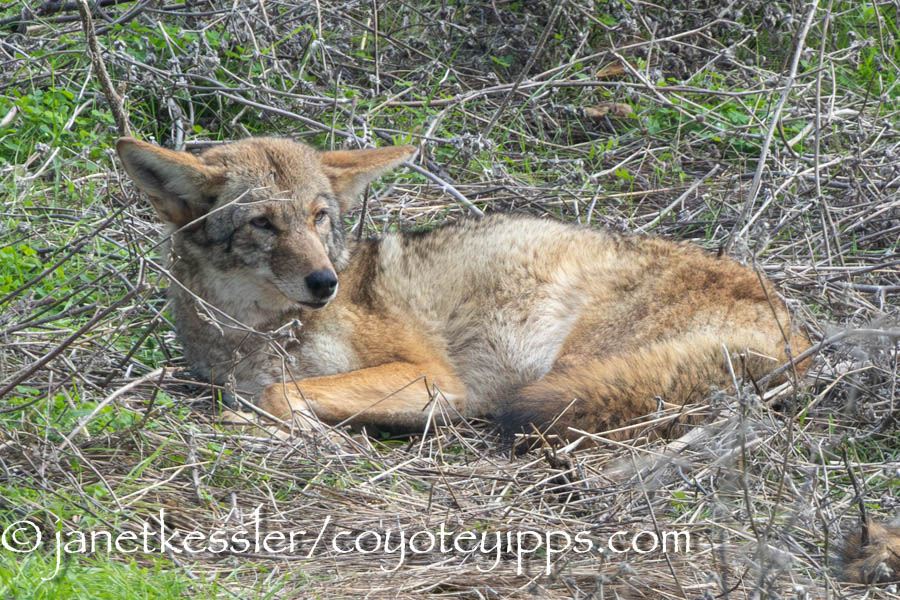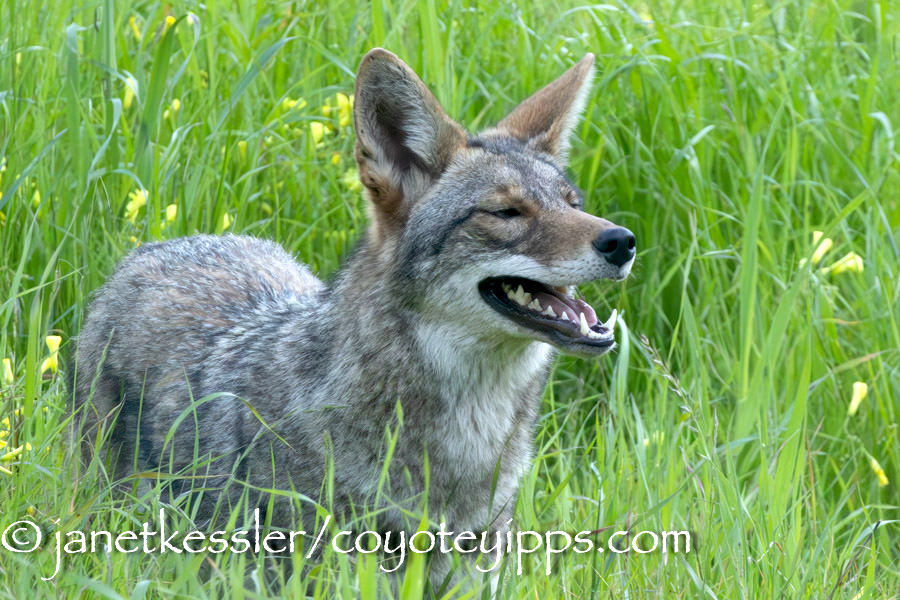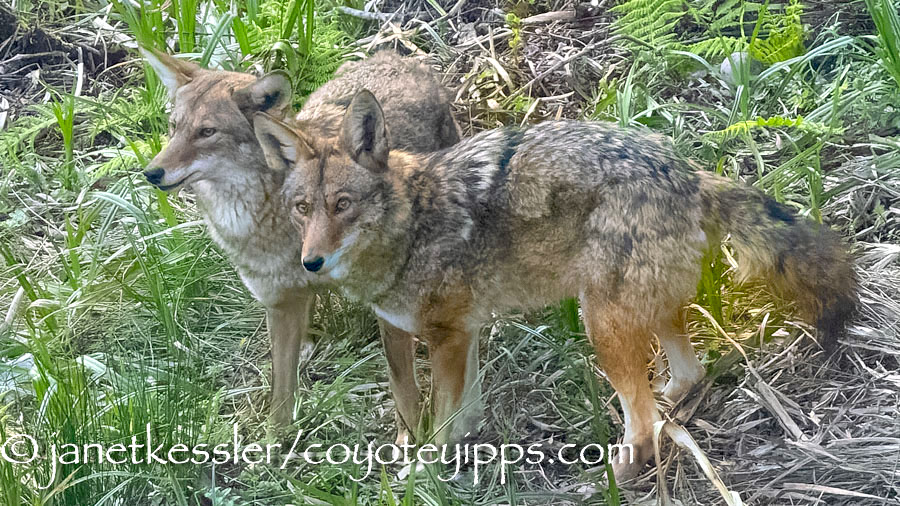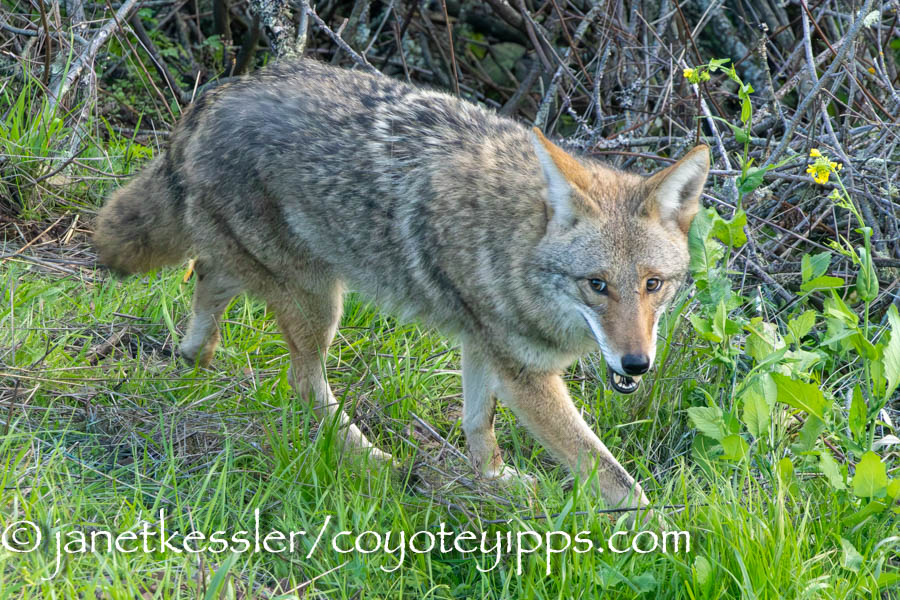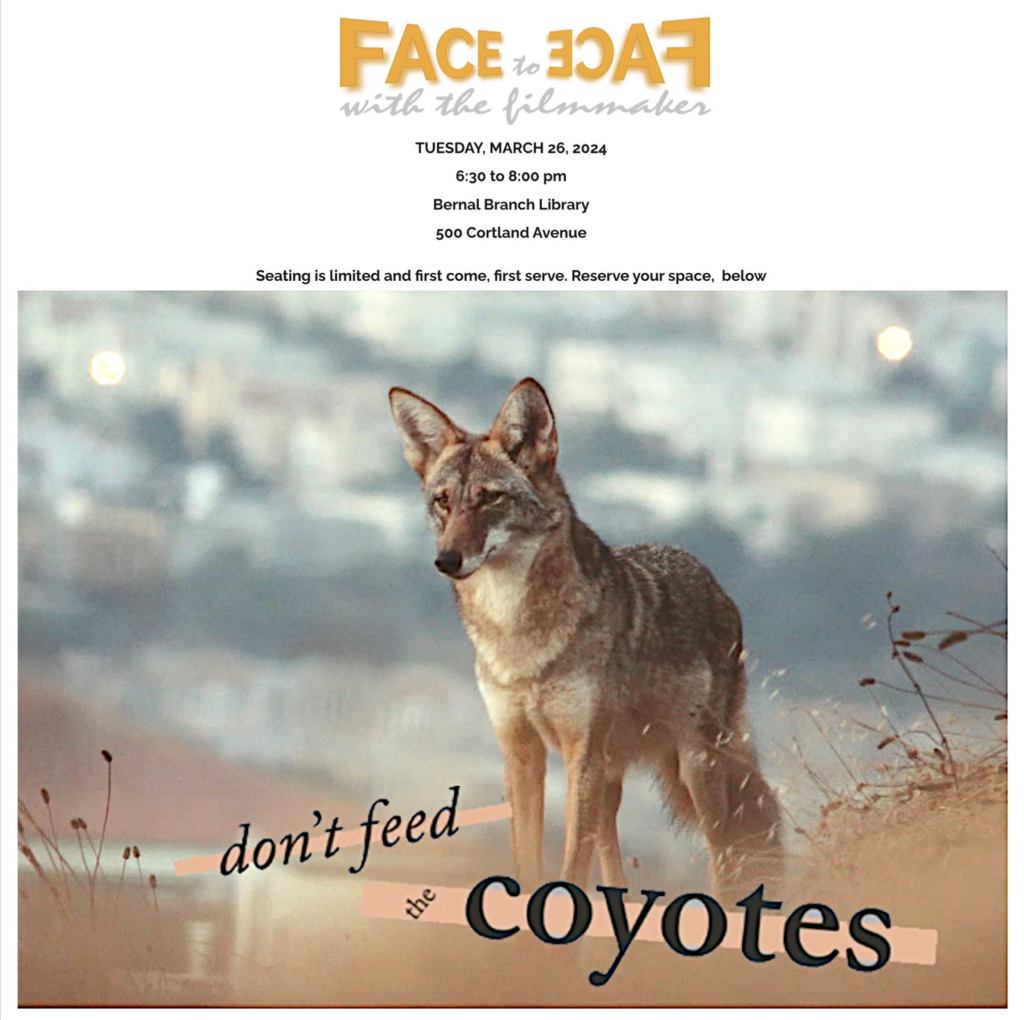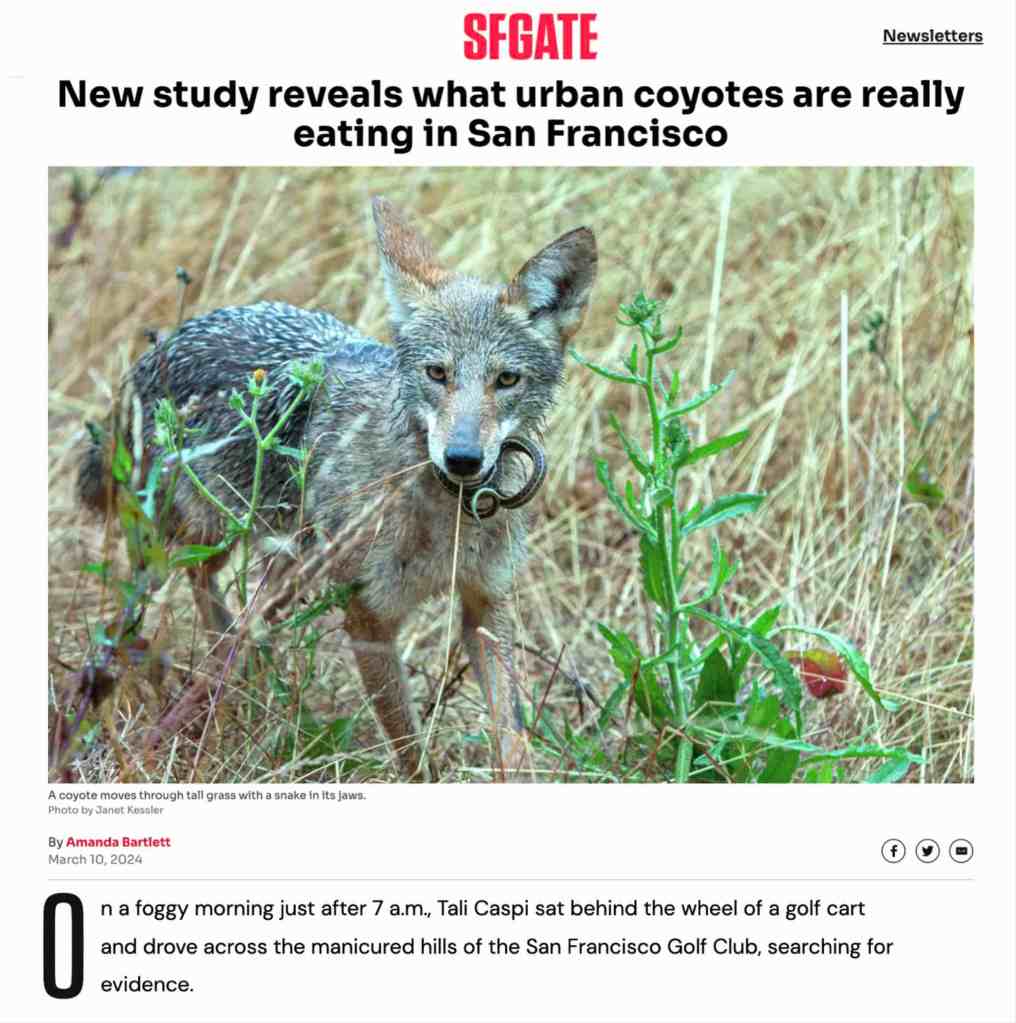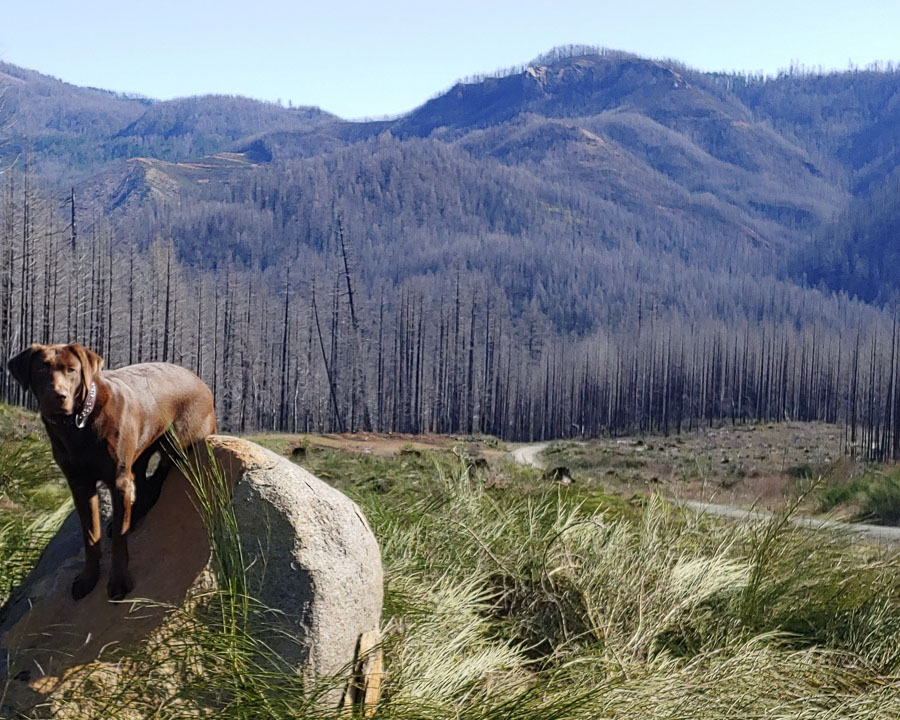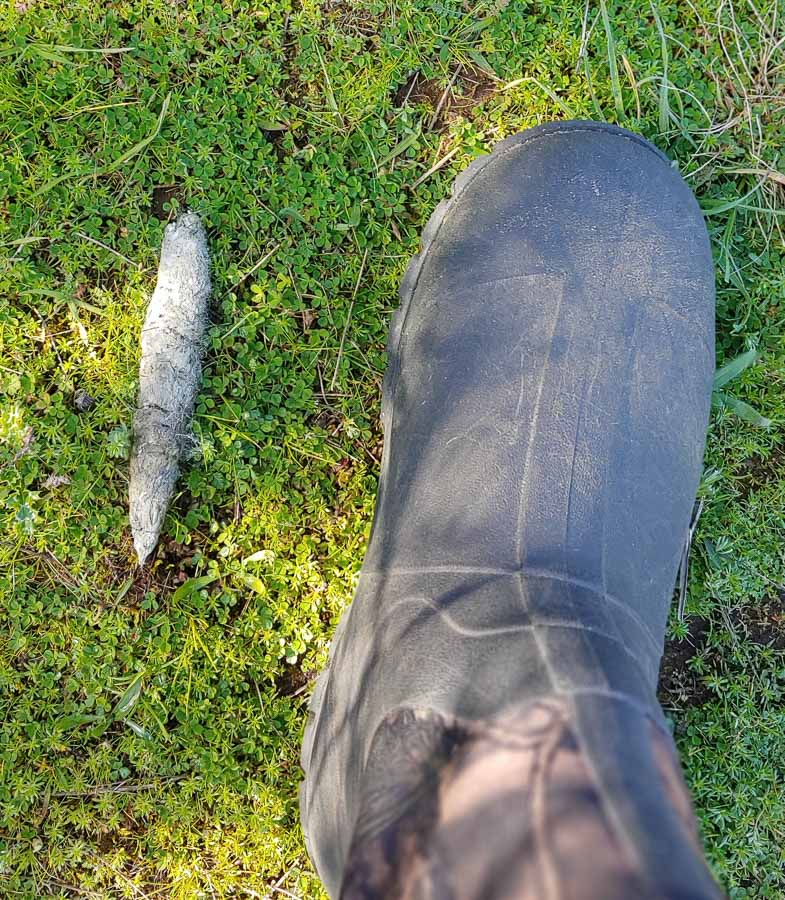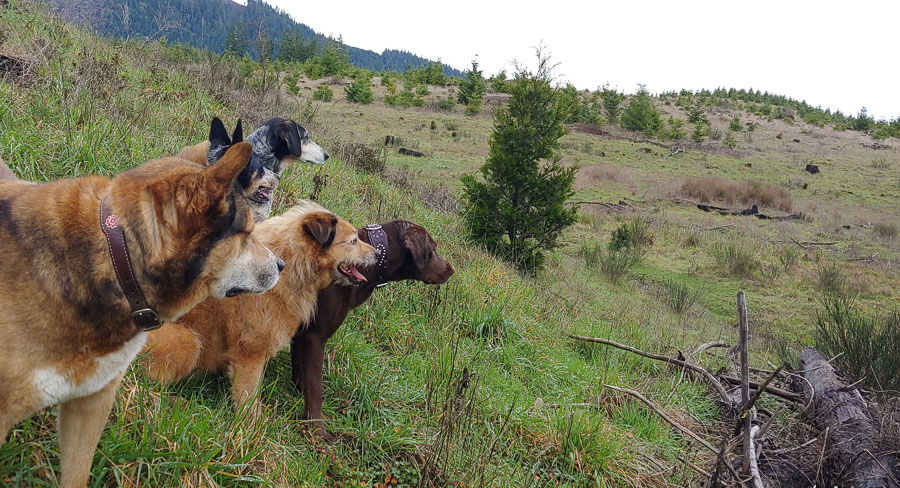Coyotes “test” in order to assess and learn about the world around them. “Testing” needs to be differentiated from “messaging”. The messaging behavior, as I’ve often said, is a clear warning, usually to dogs, to keep away or go away. It involves scary posturing, including an arched back, gaping with lips pulled back and teeth bared, tail tucked under: the message is “leave!” If you encounter this behavior, the best thing to do is walk away and keep walking away. That’s what the coyote wants, so you might as well do it.
On the other hand, curious coyotes may *test* or *assess* how a dog will react to them which is not a demand to immediately move away — though this is what you should do practically to discourage the behavior. A coyote may test or assess a dog by approaching with a little bouncy gait or play-bows and try to interact, touch, or nip the dog’s tail. Some people have mistaken this for an invitation to play, whereas other dog owners have been terrified of any coyote approaching their dog. Although it does not look unfriendly, it needs to be discouraged. This is testing behavior and not play: a dog should be pulled away from this situation and walked away from the coyote. And here is the video, taken long ago in the San Francisco fog, which shows this coyote behavior towards, in this case, a disinterested dog who doesn’t react at all to the coyote. Few dogs will behave like this dog. Most dogs will lunge at and bark at the coyote.
A variation of this testing behavior might involve a bit of a dare or provocation — messaging displays are not involved. Your reaction should be the same: leash your dog and move away from the coyote showing him you aren’t interested in interacting. I’ll describe this here:
Coyotes watch in order to get to know the world. As they do so, they assess and judge situations and individuals of interest to them, in this case dogs. Watching informs them about what every animal is capable of and how their own safety might be affected by these capabilities. After watching for some time — maybe even weeks on a regular basis — a coyote might summon up enough courage to “test” or even “provoke” a reaction in a dog: it’s a variation on the testing behavior I outlined above.
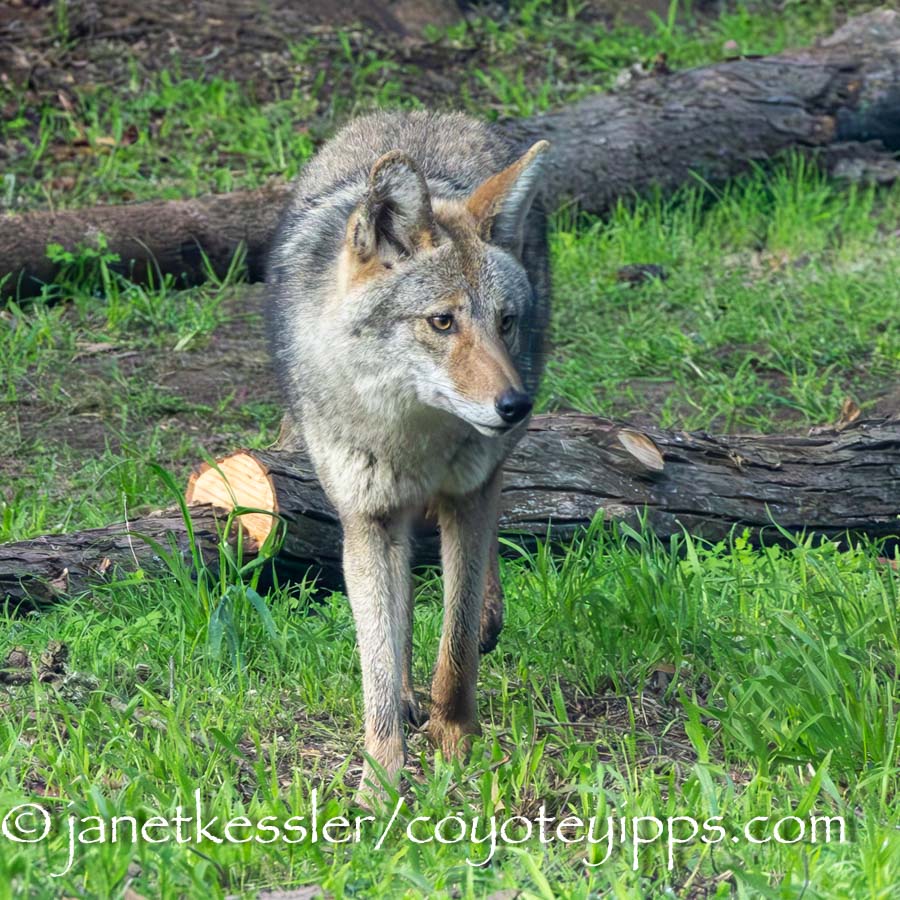
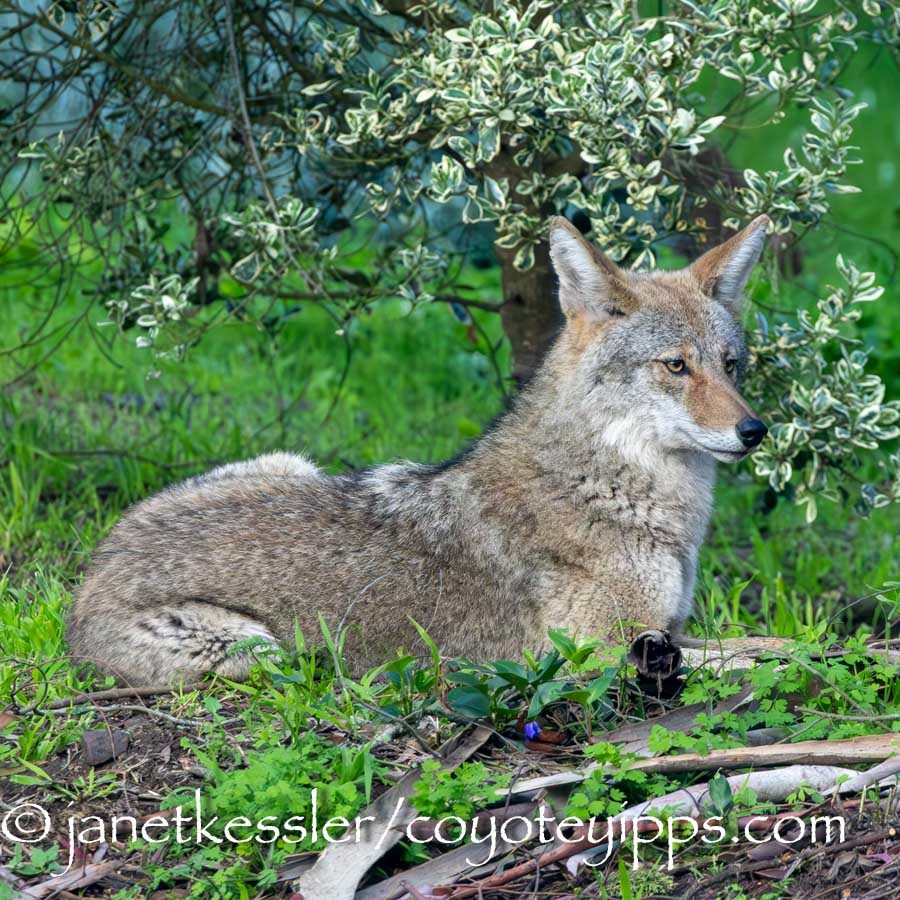
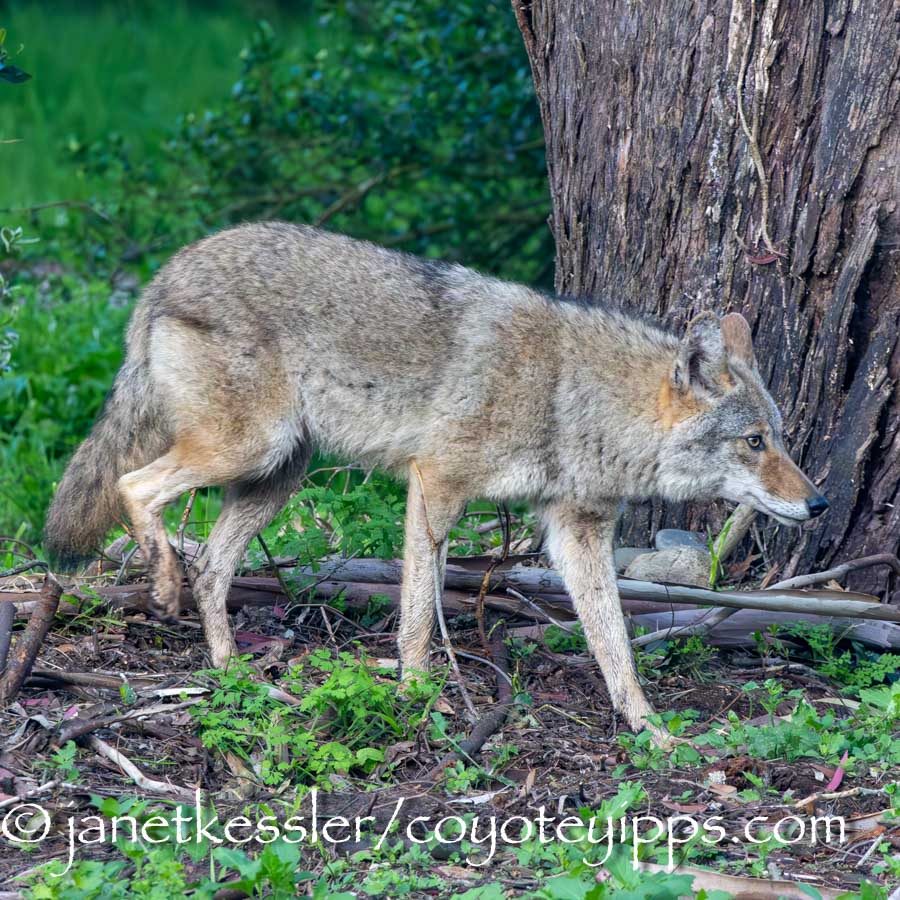
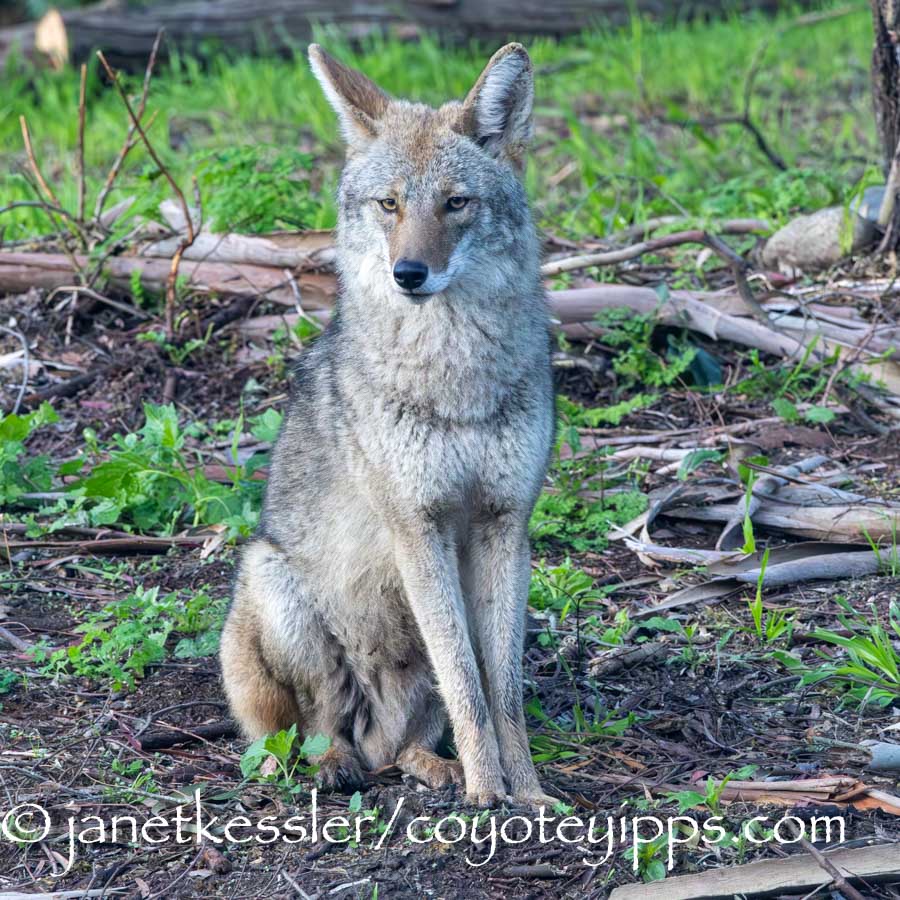
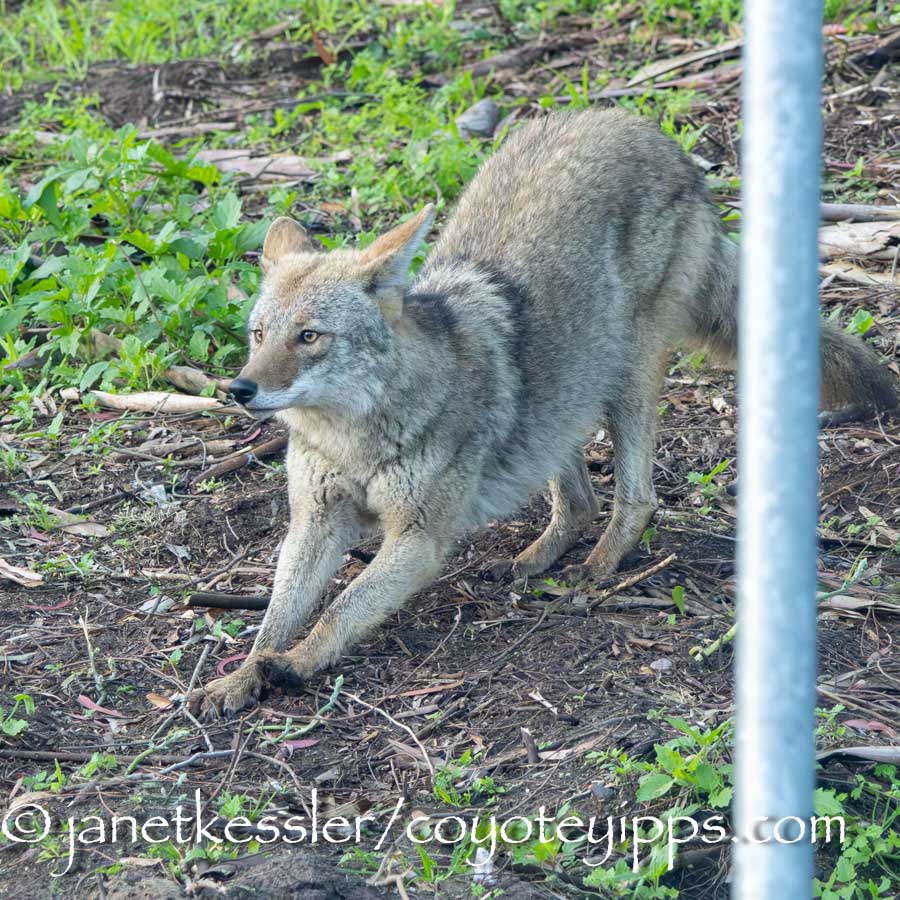
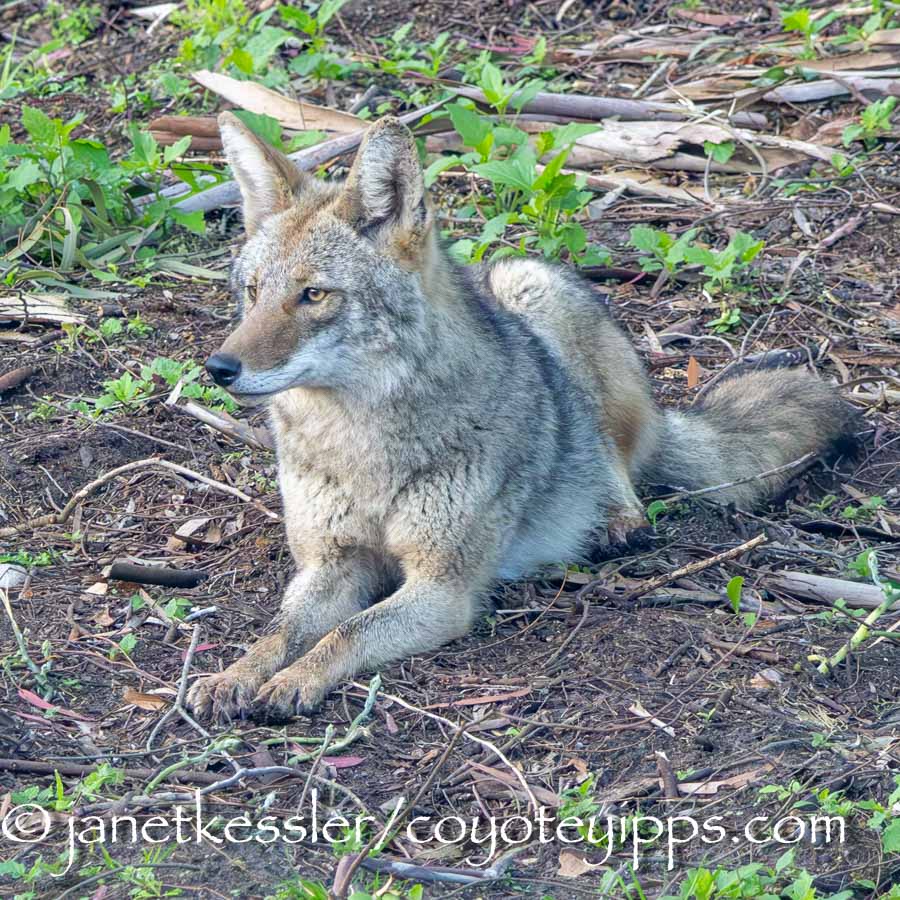
One of the coyotes I watch has, for the last little while, stopped and fascinatingly watched a particular dog and his owner playing fetch on a large grassy field in a park. Over time, the coyote has come to know this dog’s capabilities and has now *graduated* to a mode where he either wants to *test* the situation or even *provoke* the dog into reacting to him. It’s not aggressive but it stirs things up a bit because it is an encounter that causes a response or retort. What is the coyote doing? First, he wants the dog to know he’s around and that this is his — the coyote’s — home. After all, the dog appears daily for less than an hour, whereas the coyote lives there.
It’s important to remember that only one coyote nuclear family occupies any one territory and all other coyotes are kept out. I’m sure this coyote exclusivity affects their feelings towards dogs. The coyote does this by entering into the dog’s field of vision and looking on or pretending to sniff something in the area, coming closer if the dog doesn’t react. To some, this may look like *play* and in fact it does border on play in that it’s fairly benign. The coyote will engage this way only only for a moment — just long enough to prove to himself that he’s the smarter and quicker and the more clever of the two. In other instances, I’ve seen the coyote swipe the dog’s ball and run off with it.
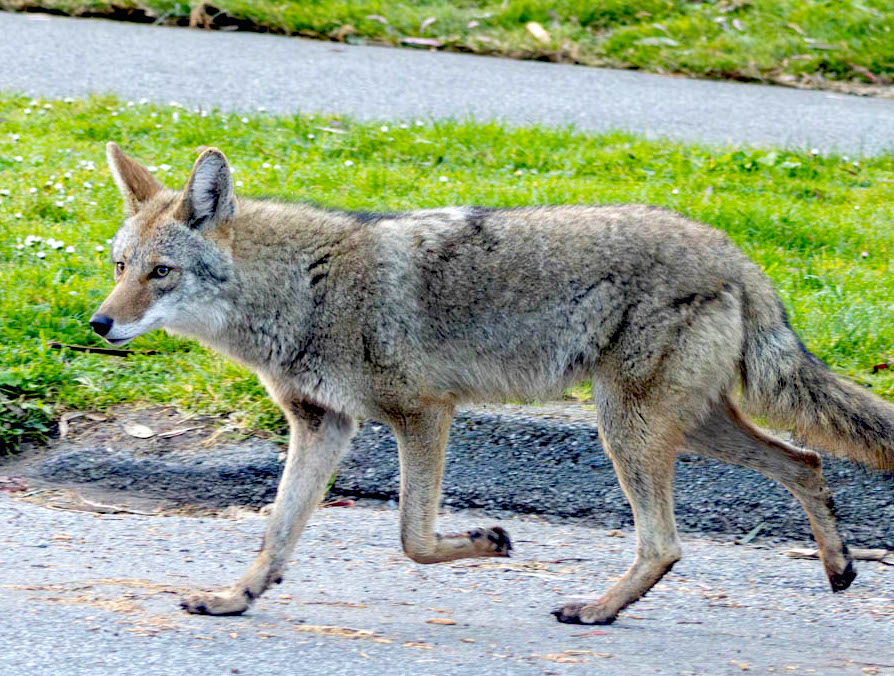
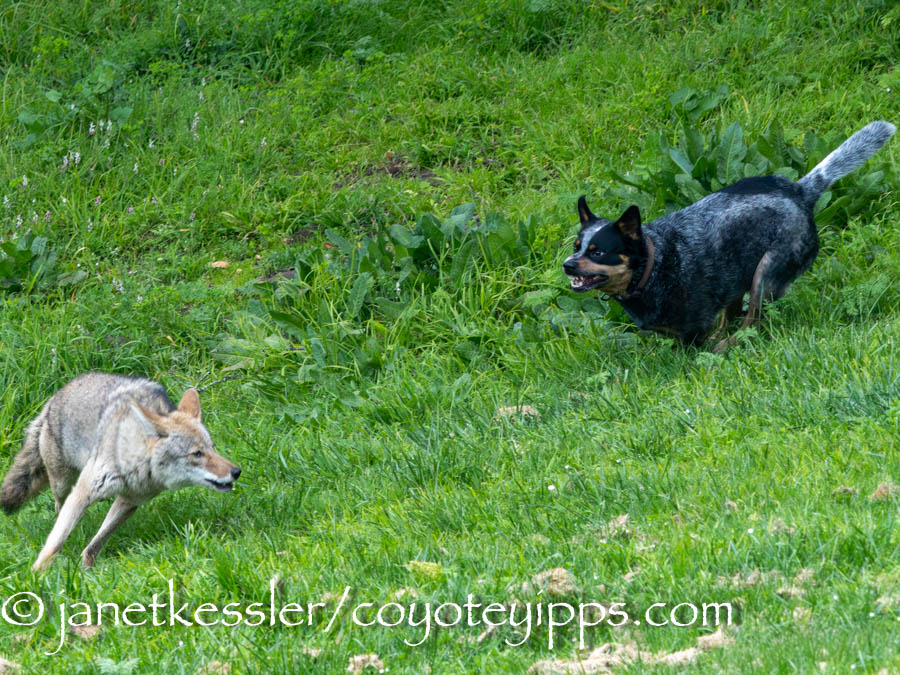
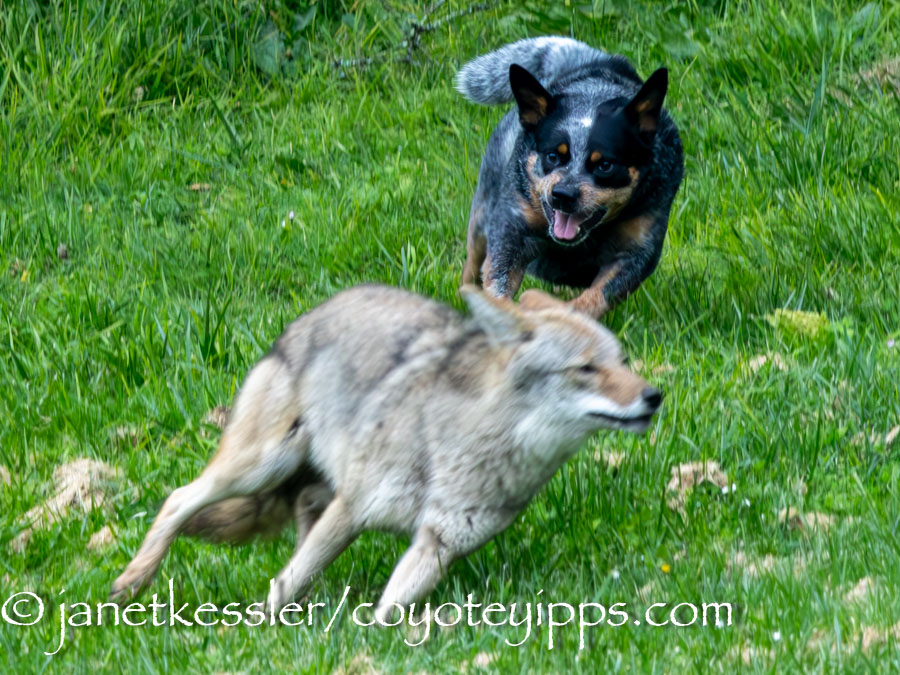


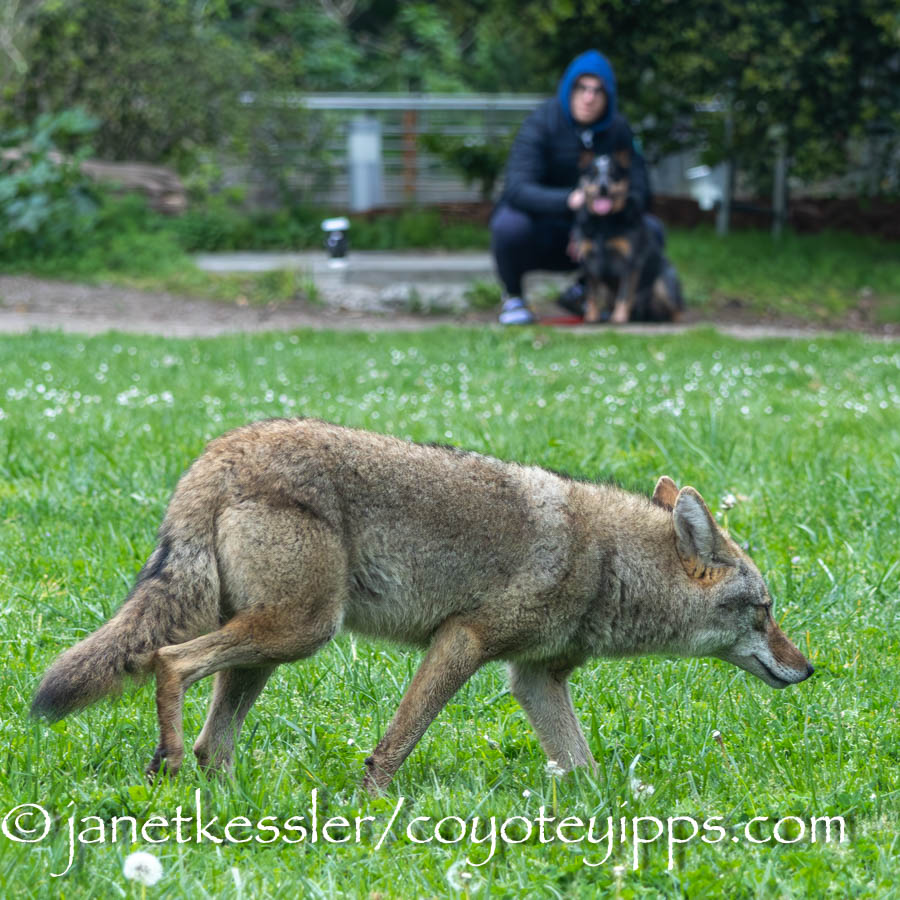
So the coyote heads towards the dog slowly. He pretends to do other things, including sniffing the ground. When the dog becomes aware of the coyote, the dog gives chase. The coyote runs off, just fast enough to keep out of reach of the dog, letting that dog get close enough so that he feels he might catch the coyote, even circling back so that the dog will continue. This, of course, only goes on for a minute before everyone yells at the dog owner to please leash his dog, which he does. That ends the interaction, and maybe in a week or so, it will happen again.
Below are photos of a coyote ducking and then crouching low in the ground to keep from being seen by a dog — this is their normal reaction to active dogs. Testing is reserved for dogs that they think pose no threat to them.
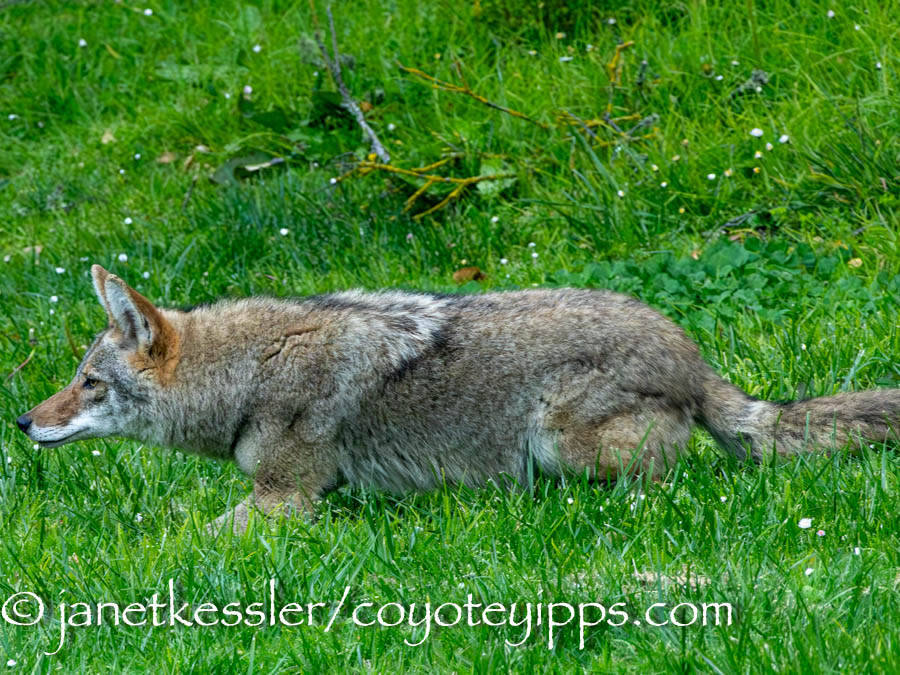
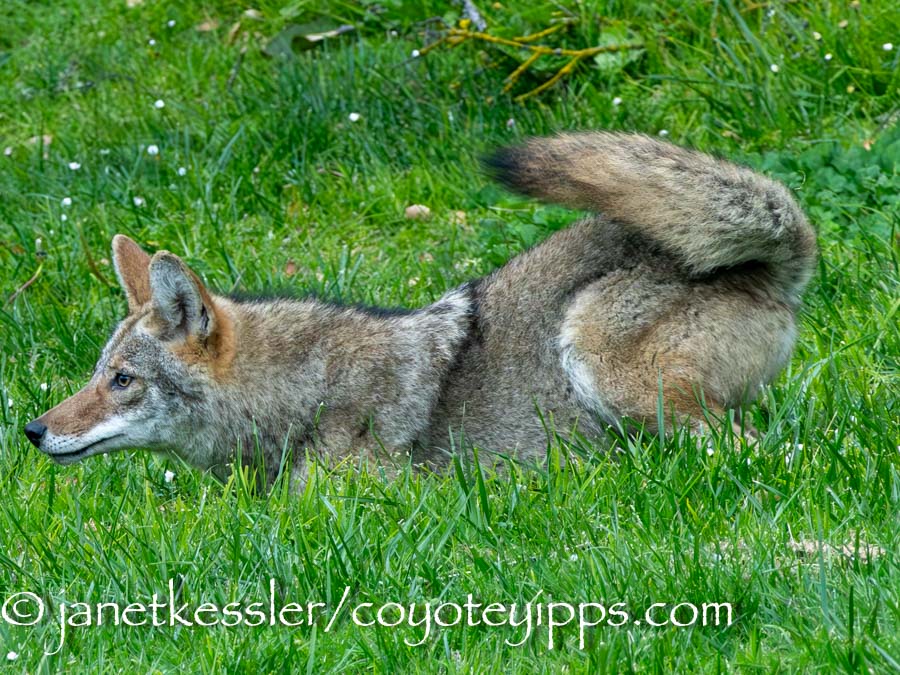
I myself, and several other people I’ve spoken to, have encountered a similar type of behavior towards human. In my case, it occurred because the coyote noticed I was focused on him: he wanted to asses what my intentions were: https://coyoteyipps.com/2023/11/03/testing-feints-and-zoomies/
© All information and photos in my postings come from my own original and first-hand observations and documentation work which I am happy to share, with permission and with properly displayed credit: ©janetkessler/coyoteyipps.com.

